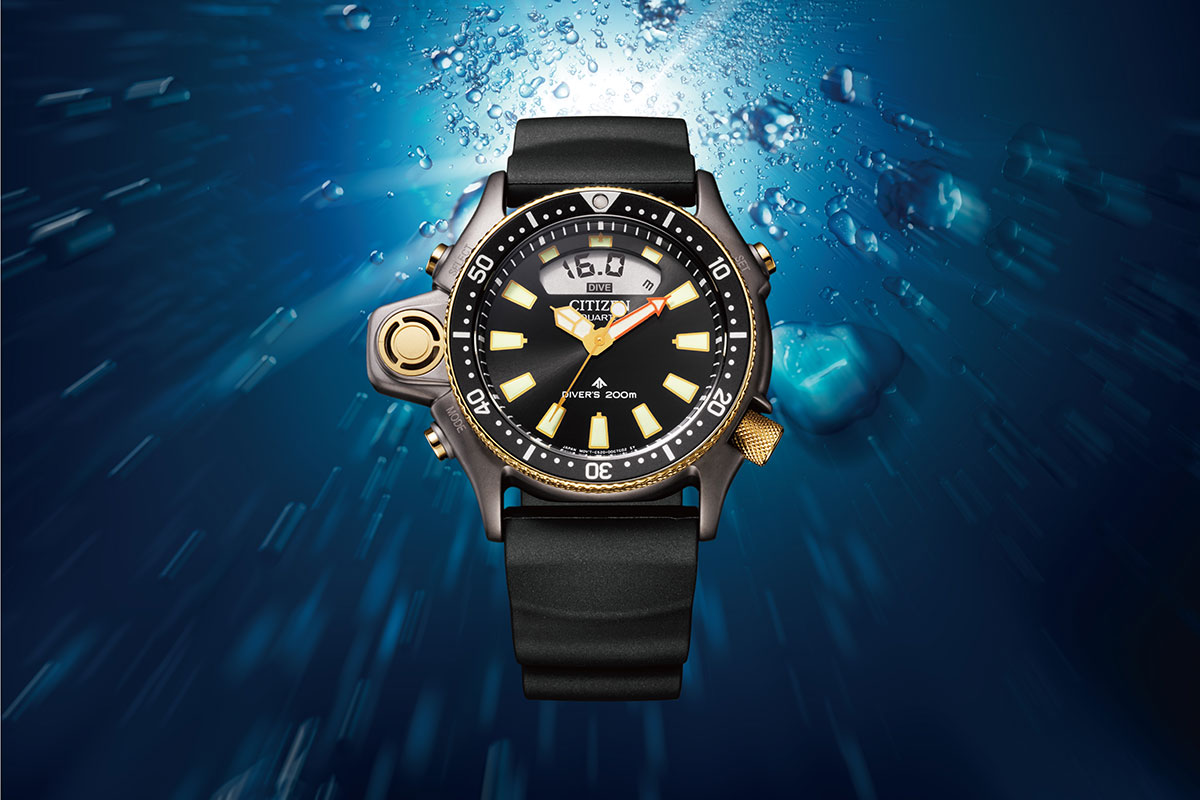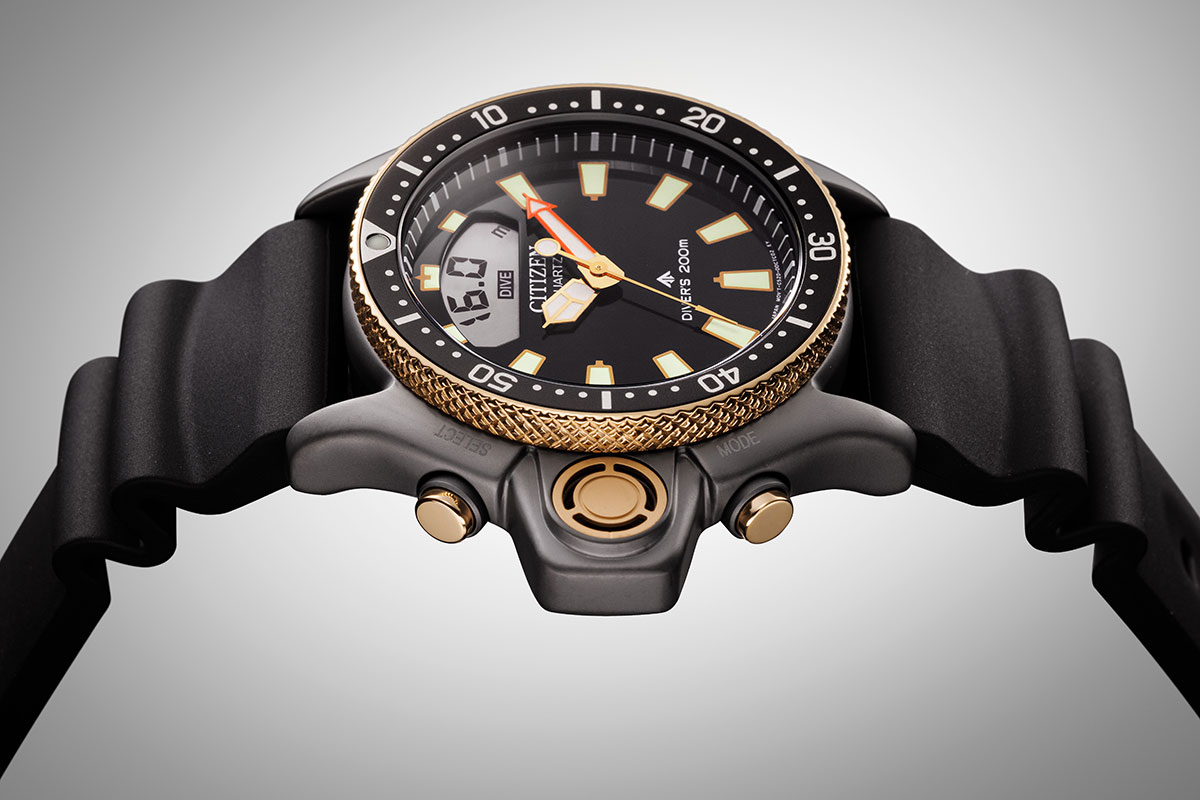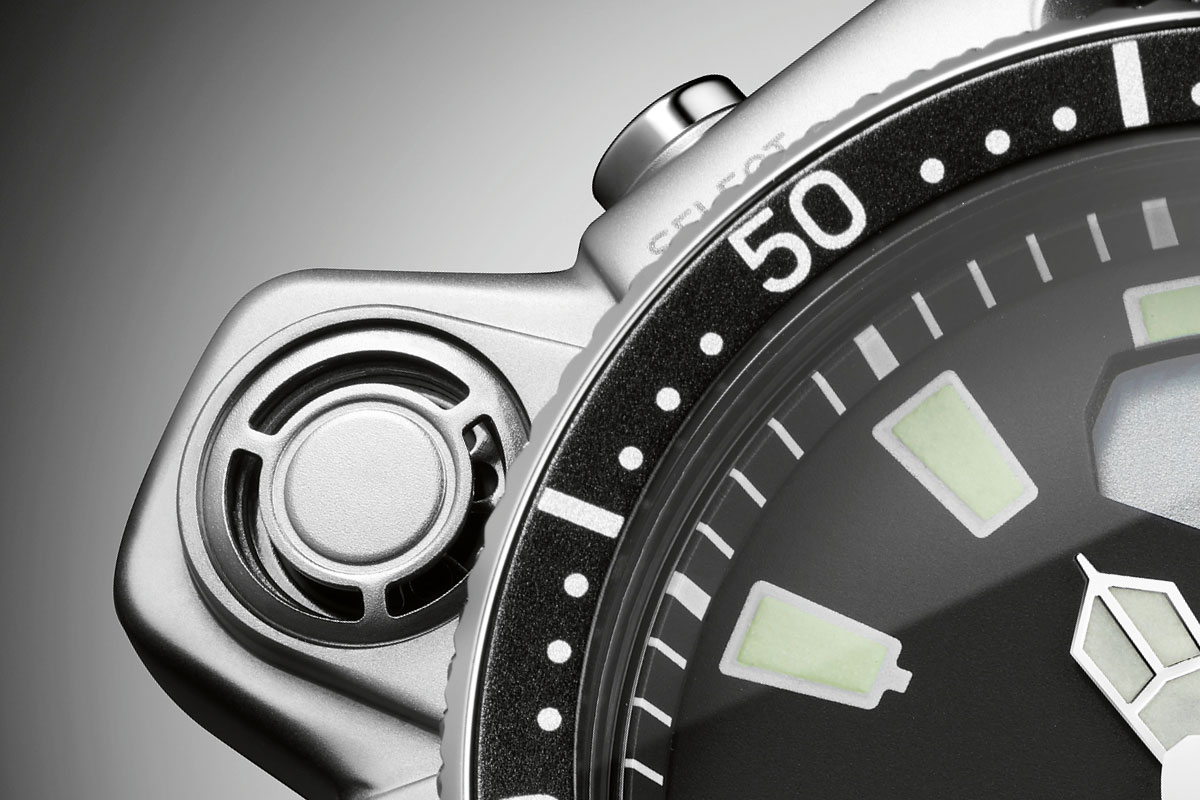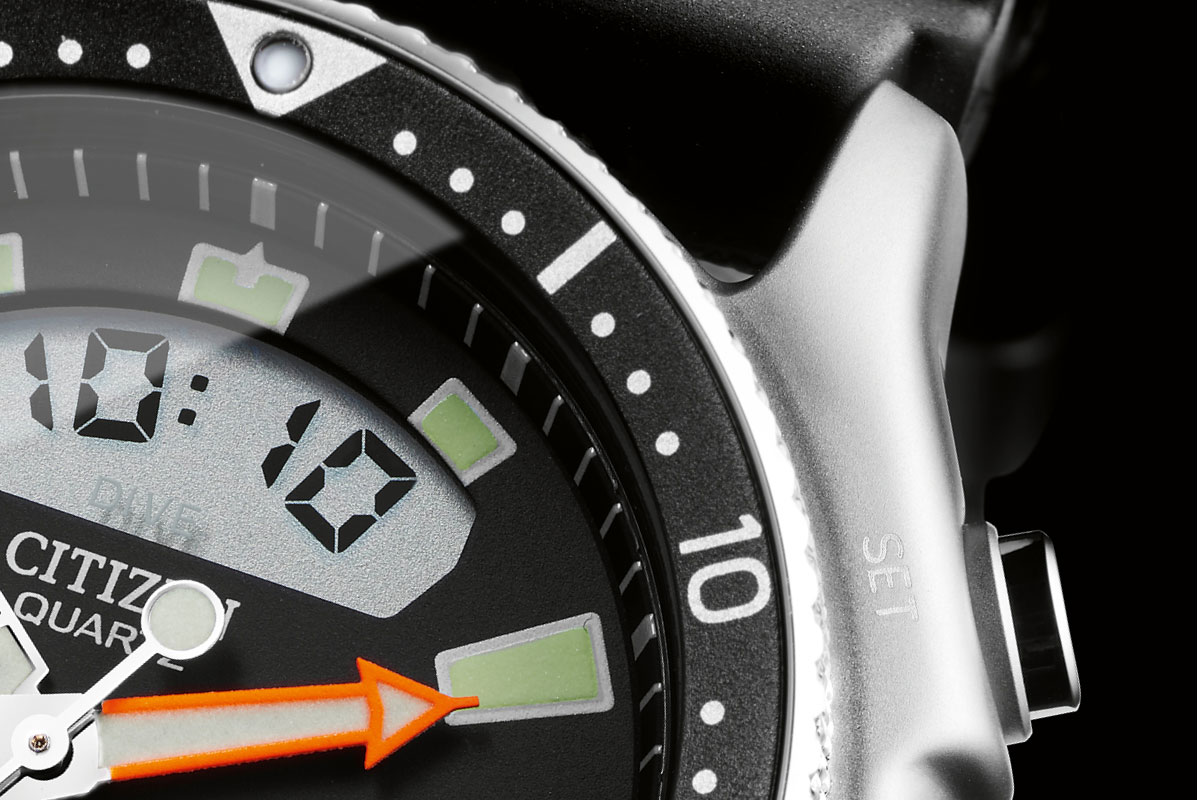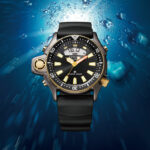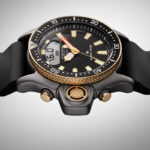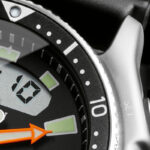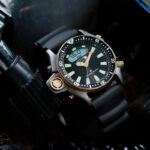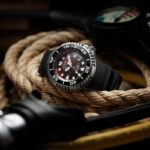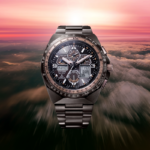This post is also available in: Italian
A few days ago, writing about Seiko, I mentioned how 2025 is a year of anniversaries in watchmaking, celebrated from Switzerland to Japan. It is to Japan that I return today to talk about Citizen’s Aqualand – which, coincidentally, also celebrates an important anniversary, because it is a round number: 40 years. The gift Citizen has given itself is called the Promaster Aqualand 40th Anniversary Limited Edition.
So it is four decades since the Aqualand appeared on the market, presenting itself to enthusiasts and the world as the first diver’s watch equipped with an electronic depth sensor. An extremely useful technical gadget that only a brand like Citizen and a country like Japan, which has always made the technological avant-garde its banner, could develop. It was the 1980s, with electronics and quartz dominating watchmaking. But the Aqualand story began much earlier.
At the origins of Aqualand: the Parawater line
Exactly in 1959, when Citizen developed the O-ring gasket. With a technology borrowed from the aviation industry, it impenetrably sealed the watch case. From that seal came the Parawater line, which was the beginning of everything. And it was a spectacular start.
To prove the effectiveness of the gasket, Citizen’s engineers literally threw hundreds of Parawater watches into the sea, sealed in special capsules, and left to the flow of the Kuroshio current. That is, one of the major ocean currents, which originates in the Philippines, flows up to the North Pacific and down the coast of California. Each capsule contained a message with geographical coordinates and invited whoever found it to send it back to Citizen.
Well, years after this experiment involving the father of Aqualand, one of those capsules was found in California and returned to the sender with a signed letter from the finder. The watch inside was still fully functional.
After the search for water resistance, the next step was the development of technologies useful to the professional divers who would use the watches. It was in this sense that the depth sensor of the Aqualand was to be understood, which in 1985 was to change the way underwater watchmaking was understood.
Challenges (and solutions) that led to the birth of the Aqualand
From the experience gained first with the Parawater and then with the Aqualand, Citizen created the Promaster collection in 1989, still a touchstone for divers today. It was aimed at air and land professionals as well as sea professionals, but the line’s diving heritage was strong at its origins and has remained so to this day, because it still carries on the revolution of the first Aqualand of ’85. That is, the fact that while before a dive watch simply withstood the action of the water, now it did more: it read, measured and responded to the sea. Thanks to the electronic depth sensor and the small analogue display on the dial.
At the heart of that watch, Citizen had set six challenges to be faced and overcome, each with a mechanical solution. The first challenge: to add a digital depth sensor. The solution: to develop a miniaturised pressure sensor, capable of measuring pressure in real time up to 80 metres. Second challenge: making sure that water does not reach the electronic sensors. Solution: completely redesigned case and glass, sealed with advanced gaskets.
Third challenge: ensuring battery life by using small batteries. Solution: use of energy-efficient electronic sensors. Fourth challenge: readability in the dark. Solution: high-contrast backlit LCD display. Fifth challenge: helping divers avoid rapid and dangerous ascents. Solution: a clearly audible alarm that would go off if the ascent was too rapid. Sixth challenge: accurate reading of information despite changes in pressure and temperature. Solution: self-calibrating sensor, which protected against corrosion and pressure changes.
The chief developer of the original Aqualand, Tatsuo Nitta, tested the watch himself in water to verify its accuracy, water resistance and readability: “We needed it to perform well and be created to be efficient,” he said.
The Aqualand 40th Anniversary limited edition
In essence, therefore, the moment the watch debuted on the market it was immediately destined to leave its mark on the history of Citizen, and not only in that. It was in fact launched as Promaster Aqualand, before Promaster became a real collection (as I wrote above, this happened four years later), indeed perhaps ‘THE’ collection for fans of the brand. It was in fact part of the Sporte MS Series, intended for the world of the sea, but it soon became clear that that label was too narrow for it.
The Promaster Aqualand 40th Anniversary Limited Edition was presented to the Italian trade press and a group of selected foreign journalists last week, in an environment in which the Aqualand is particularly at home. It was the Y-40 The Deep Joy facility in Montegrotto, Veneto, which houses the third deepest pool in the world, -42.15 metres. Guests were able to try the watch in scuba diving, followed by experienced instructors. It was not the open sea, but the experience was nevertheless enthralling. We were there and can testify to that.
As you may have guessed, in this article I have privileged the historical part, because this is watchmaking history. You can find some technical details of the new Promaster Aqualand 40th Anniversary Limited Edition in the captions. Here I would just like to point out that the price is 468 euro and that the watch has been created in 5,800 pieces worldwide, 2,000 of which for the Italian market. A testimony to how important Italy is for Citizen and how strong the brand’s community of enthusiasts is in our parts.
